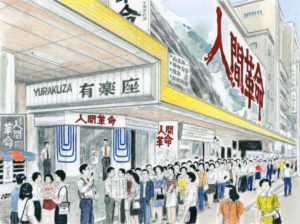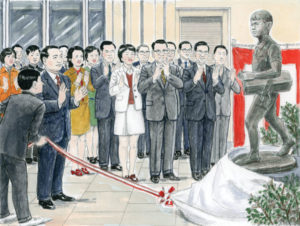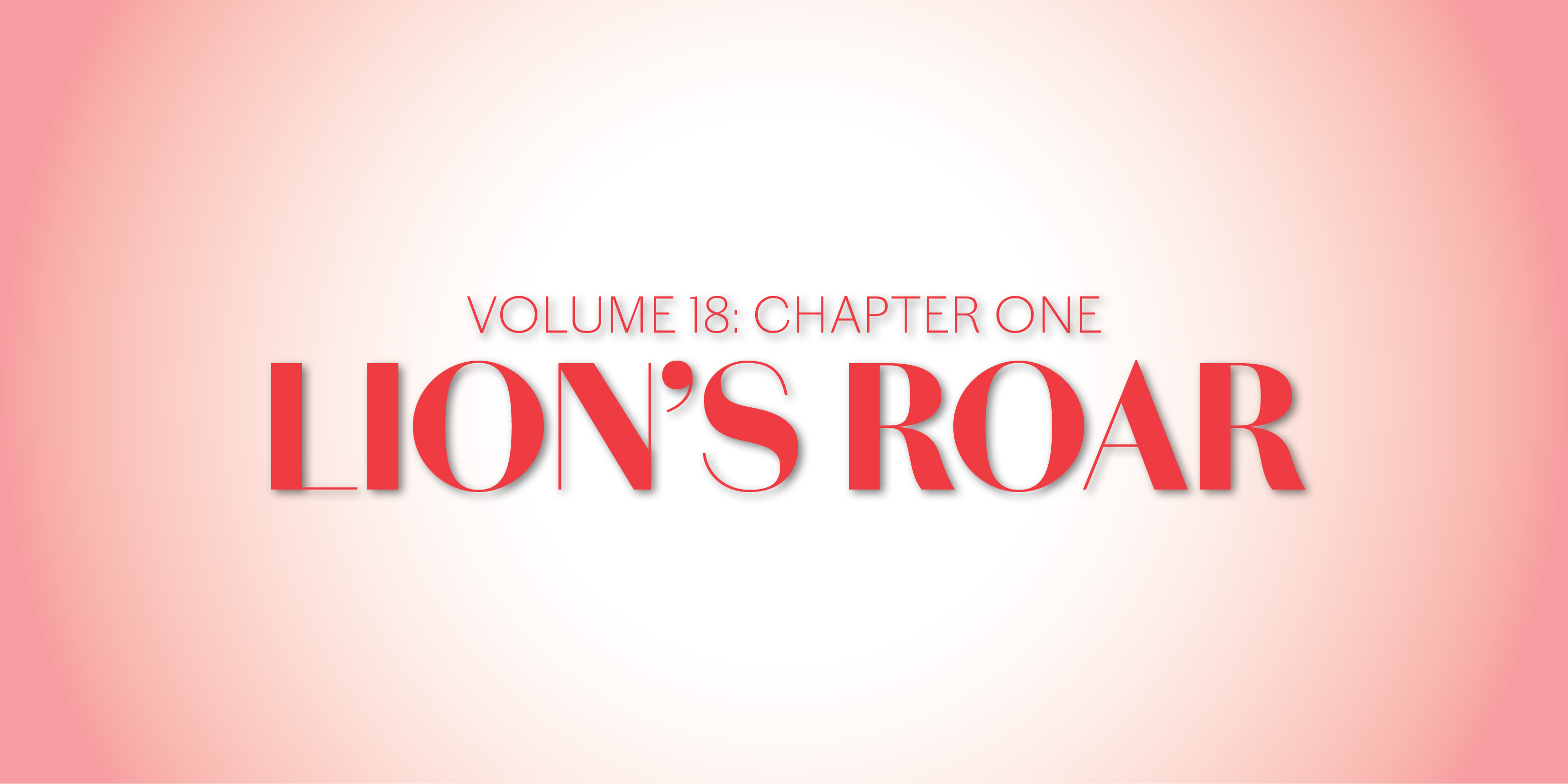Chapter Summary

Illustration courtesy of Seikyo Press.
On September 8, 1973, The Human Revolution film, based on Shin’ichi Yamamoto’s novel, opened at the Yurakuza Theater in Tokyo and later nationwide. The film, acted and produced by noted individuals in the film industry, played to record audiences.
The project took shape in response to a request by a well-known producer who was deeply moved by the novel. During its production, Shin’ichi visited the movie set to meet with and express his heartfelt appreciation to the actors and staff. Later, in 1976, a sequel was released, which was also well received.
With the freedom of speech incident in 1970—a controversy that arose when the Soka Gakkai defended itself against libelous accusations—there was a growing tendency among some of the Seikyo Shimbun reporters to be easily swayed by public opinion and neglect their faith. The essence of the problem was their loss of conviction in faith.
Shin’ichi frequently visited the Seikyo Shimbun offices to talk with the reporters and staff. He advised them on how to write articles, as well as the attitude one should have toward daily life. Most of all, he wanted them to understand the spirit of staff to dedicate themselves to their mission for kosen-rufu and to continue polishing their mind of faith.
On May 3, 1973, he attended a nationwide Seikyo Shimbun correspondents meeting. There he proposed five guiding principles for the paper, one of them being “to forever stand on the side of people everywhere” (The New Human Revolution, vol. 18, p. 54). Shin’ichi made concrete efforts to construct a towering castle of the written word from which the lion’s roar of justice would reverberate throughout society.
Unforgettable Scene

Illustration courtesy of Seikyo Press.
Appreciation for the Seikyo Shimbun Deliverers
From the fall of 1972, Shin’ichi Yamamoto began frequently visiting and eventually working out of the Seikyo Shimbun office, directly training and fostering the reporters and staff. With high expectations for their growth, he looked for every opportunity to inspire and encourage them.
Shin’ichi’s next gift to the paper was a bronze of a newsboy. The statue, about four feet in height, depicted a young boy carrying a roll of papers under his arm. Created by the renowned Japanese sculptor Ikuhisa Koganemaru, it had been exhibited with the title “Uncrowned Hero” in the second Soka Gakkai-sponsored “Third Civilization Exhibition.”
Shin’ichi explained his decision for this gift: “The newspaper deliverers are the paper’s true strength behind the scenes. When it rains, they become drenched, and when it snows, they shiver with cold, but day after day, they get up in the early morning hours to deliver the paper. The Seikyo Shimbun is what it is because of their steadfast, unflagging efforts. I wish to offer them my highest praise, and that is why I would like this bronze to be kept here at the newspaper offices.”
The reporters were taken aback by Shin’ichi’s words. They realized that somewhere along the way, they had started to take for granted the fact that the newspaper was actually being hand-delivered.
Perceiving their sentiments, Shin’ichi went on: “It’s especially important that you, the reporters, don’t forget to be grateful for the efforts of those who deliver the paper. At ordinary newspapers, it may be the case that journalists simply write their articles without thinking about the problem of increasing reader subscription or how the paper is delivered. But as Seikyo Shimbun reporters, your attitude must be different. It’s important that, in addition to writing articles, you lead the way in efforts to increase subscriptions, listen carefully to readers’ voices and exhibit the highest respect for all the newspaper deliverers. This approach represents a revolution in the world of journalism.”
Shin’ichi named the statue of the newsboy “Emissary of Kosen-rufu,” and it was decided that it would be installed in front of the Seikyo Shimbun Building.
On December 29, 1973, an unveiling ceremony for the statue was conducted with the participation of staff members from the paper’s business affairs general bureau, representative newspaper deliverers and children of some of the local distributors.
Many business affairs general bureau staff members would arrive at the office more than an hour early each morning to pray earnestly for the safety of those distributing and delivering the paper. Shin’ichi had been quietly observing their efforts. (NHR-18, 72–74)
Key Passages
When we acknowledge our limitations and shortcomings, and start to make a concentrated effort to overcome them, they begin to shine as strong points. That is the power of faith. (NHR-18, 7)
■ ■ ■
Being a passive bystander who only stays on the sidelines and complains is destructive. Unless you stand up and take the initiative, you cannot expect to grow as an individual or contribute to kosen-rufu. (NHR-18, 79–80)
You are reading {{ meterCount }} of {{ meterMax }} free premium articles

